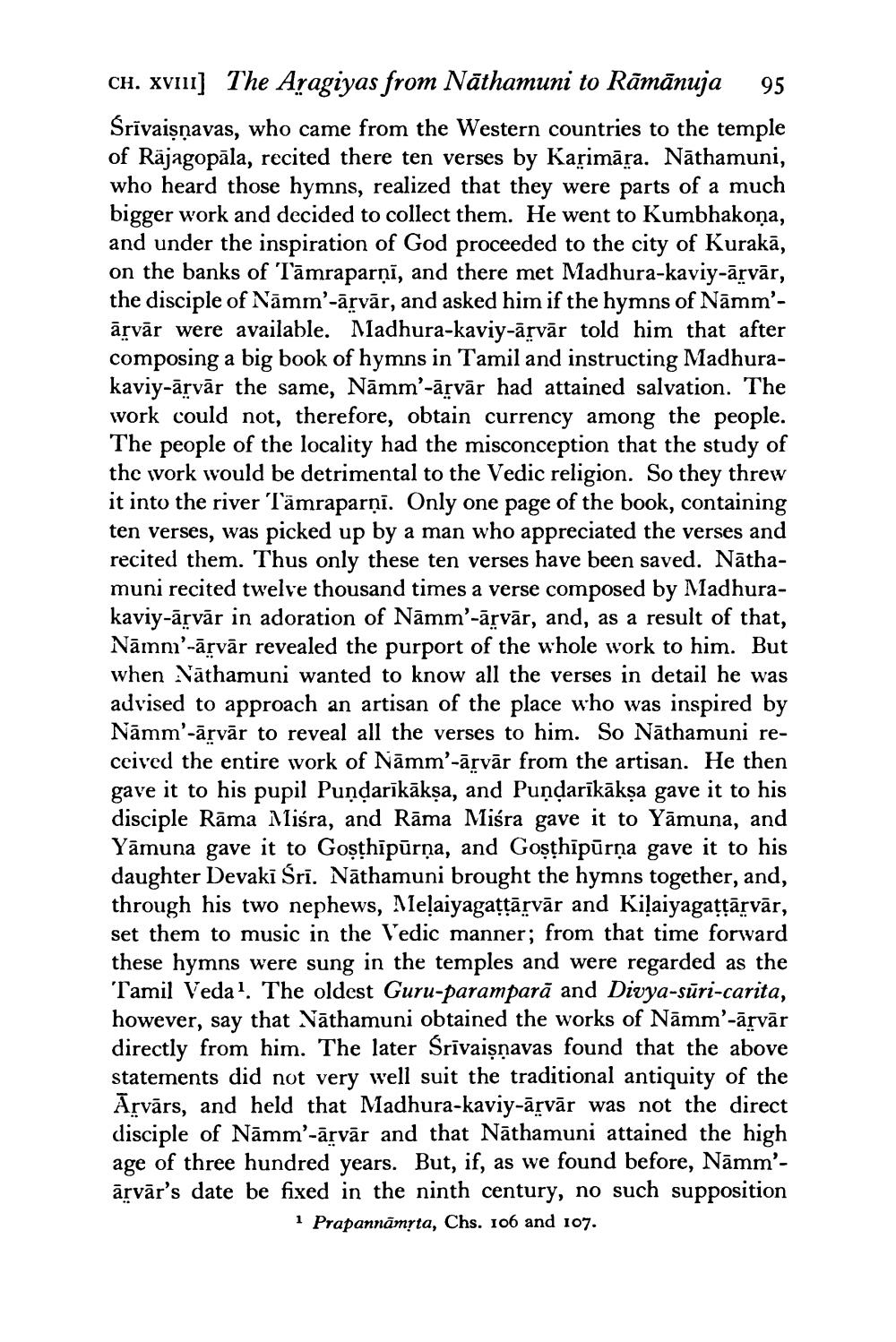________________
CH. XVII] The Aragiyas from Nāthamuni to Rāmānuja 95 Śrīvaisnavas, who came from the Western countries to the temple of Rājagopāla, recited there ten verses by Karimāra. Nāthamuni, who heard those hymns, realized that they were parts of a much bigger work and decided to collect them. He went to Kumbhakoņa, and under the inspiration of God proceeded to the city of Kurakā, on the banks of Tāmraparņi, and there met Madhura-kaviy-ārvār, the disciple of Nămm'-ārvār, and asked him if the hymns of Nāmm'ārvār were available. Mladhura-kaviy-ārvār told him that after composing a big book of hymns in Tamil and instructing Madhurakaviy-ārvār the same, Nāmm'-ārvār had attained salvation. The work could not, therefore, obtain currency among the people. The people of the locality had the misconception that the study of the work would be detrimental to the Vedic religion. So they threw it into the river Tāmraparņi. Only one page of the book, containing ten verses, was picked up by a man who appreciated the verses and recited them. Thus only these ten verses have been saved. Nāthamuni recited twelve thousand times a verse composed by Madhurakaviy-ārvār in adoration of Nāmm'-ārvār, and, as a result of that, Nāmm'-ārvār revealed the purport of the whole work to him. But when Nāthamuni wanted to know all the verses in detail he was advised to approach an artisan of the place who was inspired by Nāmm'-ārvār to reveal all the verses to him. So Nāthamuni received the entire work of Nāmm'-ārvār from the artisan. He then gave it to his pupil Pundarīkākşa, and Puņdarīkākṣa gave it to his disciple Rāma Mliśra, and Rāma Miśra gave it to Yāmuna, and Yāmuna gave it to Gosphīpūrņa, and Gosthīpūrņa gave it to his daughter Devakī Sri. Nāthamuni brought the hymns together, and, through his two nephews, Aleļaiyagattārvār and Kiļaiyagațțārvār, set them to music in the Vedic manner; from that time forward these hymns were sung in the temples and were regarded as the Tamil Vedal. The oldest Guru-paramparā and Divya-sūri-carita, however, say that Nāthamuni obtained the works of Namm'-ārvār directly from him. The later Śrīvaisnavas found that the above statements did not very well suit the traditional antiquity of the Ārvārs, and held that Madhura-kaviy-ārvār was not the direct disciple of Nāmm'-ārvār and that Nāthamuni attained the high age of three hundred years. But, if, as we found before, Nāmm'ārvār's date be fixed in the ninth century, no such supposition
1 Prapannāmrta, Chs. 106 and 107.




